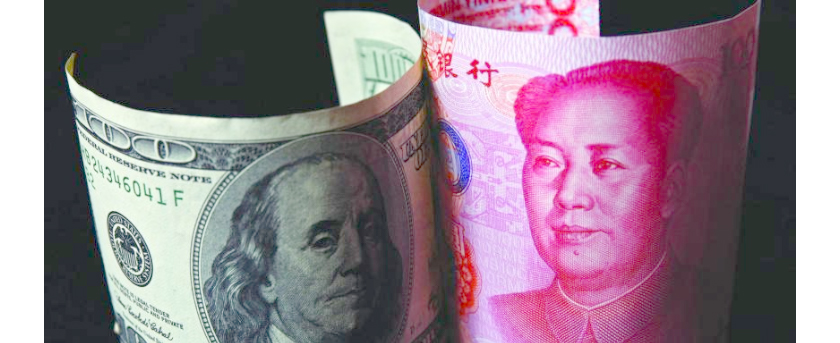
Myanmar News Updated
Highlight Myanmar News

Double Dipping on a U.S.-China Trade War
![]() 28/05/2019
28/05/2019
AUTHOR: ANDREW P.JOHNSON
There have been a lot of interesting developments in the U.S.-China trade war over the last year, and especially in the last few weeks. As events progressed, through a series of three articles, Myanmar Business Today (MBT) explained how Myanmar might be affected.
The first article was published in July 2018. MBT highlighted how an awakening U.S. economy, and its emerging trade war with China, could benefit Myanmar. At that point, the Chinese Government slapped a 25 percent tariff on soybeans from the United States. This was significant, as soybeans are the country’s biggest import from the United States by value, and presented an opportunity for Myanmar to increase its trade with China.
Then in November 2018, the second article discussed how the ongoing trade war was shifting both supply chains and industrial clusters from the U.S. and China, mostly toward Southeast Asia. We urged Myanmar to do what they could to attract the attention of enterprises on the move.
Finally, in December 2018, what seemed like a breakthrough occurred during the G20 in Argentina. Presidents Trump and Xi agreed to a temporary ceasefire to the trade war. The basics of the agreement were that U.S. tariffs would remain, but not increase. China, on the other hand, had agreed to purchase large quantities of U.S. products. However, the ceasefire was only to remain in place for 90 days.
That 90-day “ceasefire” took us up to March 1, 2019. What happened between March and the end of May, and how do those events affect Myanmar? Let’s take a closer look.
In order to get a clearer view of the stakes involved, we reached out to a couple of experts on the subject. First we spoke with Brock Silvers. He is a multi-asset strategist and the founder of Kaiyuan Capital based in Hong Kong. He is also a regular guest on BBC’s Asia Business Report, as well as other media outlets.
Silvers told us: “Recent turbulence in U.S.-Sino [U.S.-China] trade talks has raised the odds of a prolonged conflict and an increased ‘de-coupling’ of the world’s two largest economies.”
Some of the recent turbulence Silvers referred to include the following factors: the end of the G20 “ceasefire”; Trump increasing existing tariffs to 25 percent on May 10; and in response, China raising tariffs on hundreds of U.S. goods from 5 to 25 percent on May 13.
By all accounts, this is a tit-for-tat process, and would indicate that an amicable solution will not be reached any time soon.
In what would appear to be an ongoing trend, Silvers reiterated: “Many foreign enterprises are feeling compelled to shift supply chains away from China, opening huge opportunities for other Southeast Asian countries.”
MBT has been encouraging Myanmar to take note of the opportunities that might become available on two fronts: one from the U.S., the other from China. The former opportunity is to entice Western enterprises that may be looking to relocate out of China; the latter would be to increase exports for goods to China that were previously supplied by U.S. companies, but which now have a 25 percent tariff.
How has Myanmar responded to our advice?
Myanmar has been liberalizing many sectors, including insurance and banking. In fact, the Oxford Business Group’s The Report: Myanmar 2020 breaks down all of the changes Myanmar has been making in recent years.
Myanmar Business Today spoke with Aryani Manring, the U.S. Embassy spokesperson, about the U.S. relationship with Myanmar.
Manring said: “We continue to talk with the Myanmar Government about ways to improve trade ties, and encourage U.S. investment [in Myanmar], as well as Myanmar investment in the United States. Bilateral trade is increasing rapidly.”
On Myanmar’s progress, Manring had this to say: “American companies are responding to Myanmar’s reforms. One example of this is Chubb, which has been granted a license to operate in the recently-reformed insurance sector.”
However, there are still challenges to doing business in Myanmar. One Western diplomat based in Yangon pointed to the World Bank’s Ease of Doing Business Score as a resource to find out what the main barriers to investment are. Myanmar is currently ranked at 171 out of 190 countries, right behind war-torn Iraq.
Myanmar may be ranked low on a global scale, but if they keep up the pace of liberalization and infrastructure improvements, they will not stay there for long. This is especially true if they maintain the progress made without going backward; this will build trust with the international community.
As the U.S.-China trade war drags on, and Western enterprises begin to feel the squeeze of existing tariffs, they will be more inclined to look outside of China for greener pastures.
When they do, what should Myanmar expect from Western companies?
Silvers commented the expectations: “Standards will be high, and requirements will include efficient ports and warehousing, extensive transportation systems, cost-effective labor, affordable RE [real estate], and favorable regulatory and tax regimes. Myanmar may need a concerted, government-led effort before it can approach the overall attractiveness of today’s Vietnam, Thailand, or South Korea, but the potential is there.”
Myanmar is already working on all of these things. The question is: can they do it fast enough? Ironically, only time will tell.
Switching gears to speaking about the Chinese opportunity, Silvers continued: “Myanmar could begin by working to attract the production of goods currently being imported from China into its domestic market, and by targeting those goods which China no longer wishes to import from the U.S. This latter category includes a wide variety of agricultural products, the most obvious of which remains soybeans. China has massive agricultural needs, and a deep desire to dramatically reduce its reliance on U.S. producers. Myanmar is exceedingly well-positioned to take advantage. Agricultural trade missions should be a regular occurrence at this point.”
There was already a 25 percent tariff on U.S. soybeans, and they should remain a target for Myanmar, but the new tariffs expend the items they should review for increased exports. The new tariffs China placed on American goods include batteries, household appliances, spinach, coffee, construction equipment, rubber, and leather and cotton textiles; all were increased to 25 percent.
Myanmar has rubber, coffee, and leather and cotton textiles all available. Can they increase exports of these items to China?
Myanmar has an opportunity to double-dip on the U.S.-China trade war. China would be smart to diversify their supply chain, and so would American enterprises. The world’s two largest economies have good reason to do so. Myanmar just has to put their best foot forward and grab attention away from the other Southeast Asian countries.
Related News
-

Introducing Thailand’s New Ambassador to Myanmar
AUTHOR: ANDREW P. JOHNSON Thailand has appointed a new ambassador to Myanmar, and Myanmar Business Today has an opportunity to visit the Royal Thai Embassy and talk with the ambassador.
Read More 07/05/2019
07/05/2019 -

Exclusive Interview with ZTE Myanmar CEO
AUTHOR: NICHOLAS ONEGA Headquartered in China, and established 1985, ZTE is one of the largest equipment providers in the country. ZTE provides equipment and services needed for high-speed internet across the global. In addition to supplying equipment and services for the Myanmar telecom market, ZTE has been paying much attention to their Corporate Social Responsibility (CSR) and making efforts to contribute to the Myanmar communities. One of these developments is the Campus Shining Project, created to enhance the education and growth of the youth in Myanmar. With some of the largest universities in Yangon and Mandalay already on board.
Read More 09/04/2019
09/04/2019 -

5 Key Potential Investment Sectors for Thai Investors
Author : Nattawin Phongsphetrarat, vice president of Thai Business Association of Myanmar (TBAM). " One of the very famous questions that has always been asked by the Thai investors for Myanmar is what the high potential business sectors are for Thai business. " There are many sectors that have high potential but TBAM committees have analyzed that these 5 sectors are the key potential
Read More 08/04/2019
08/04/2019
